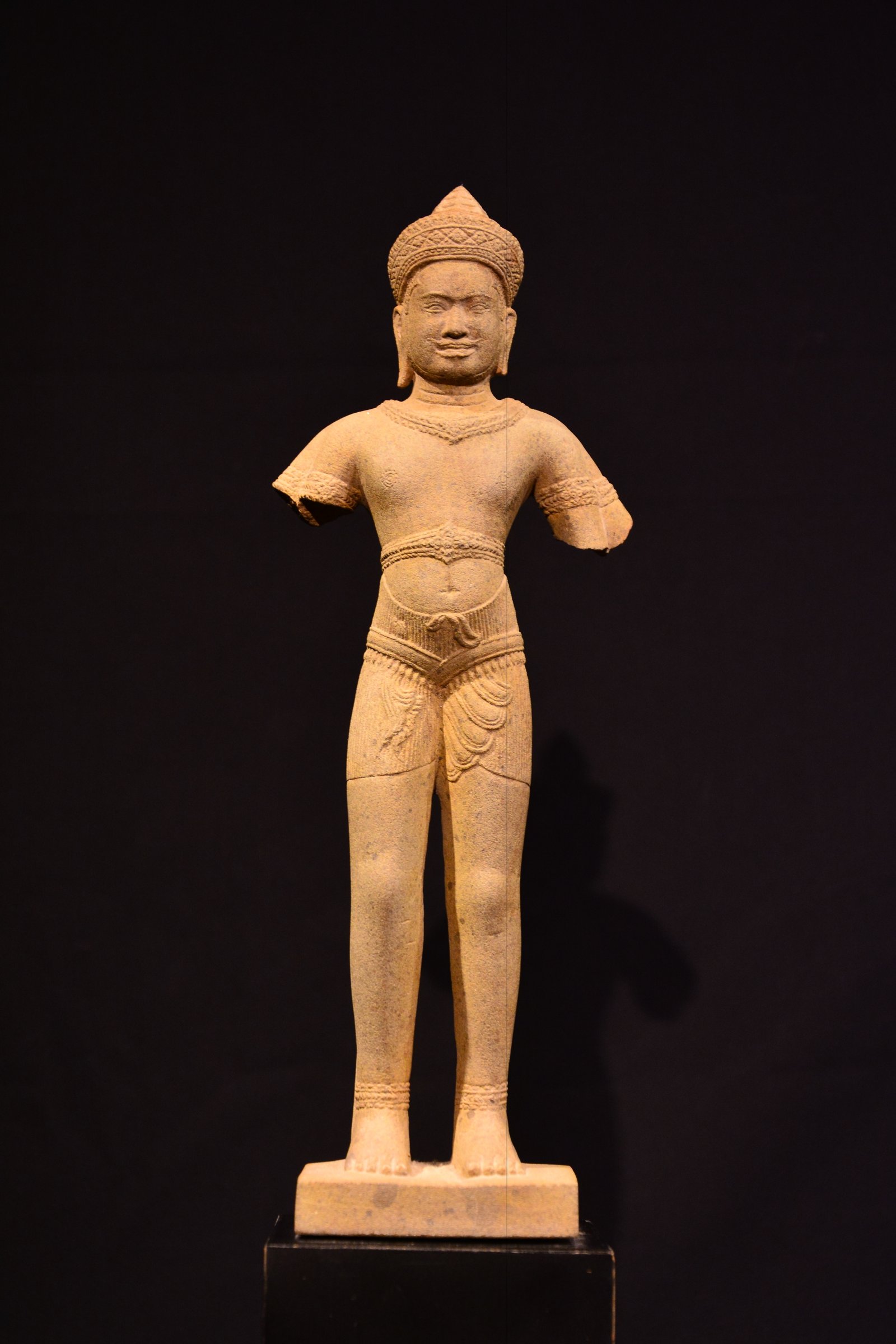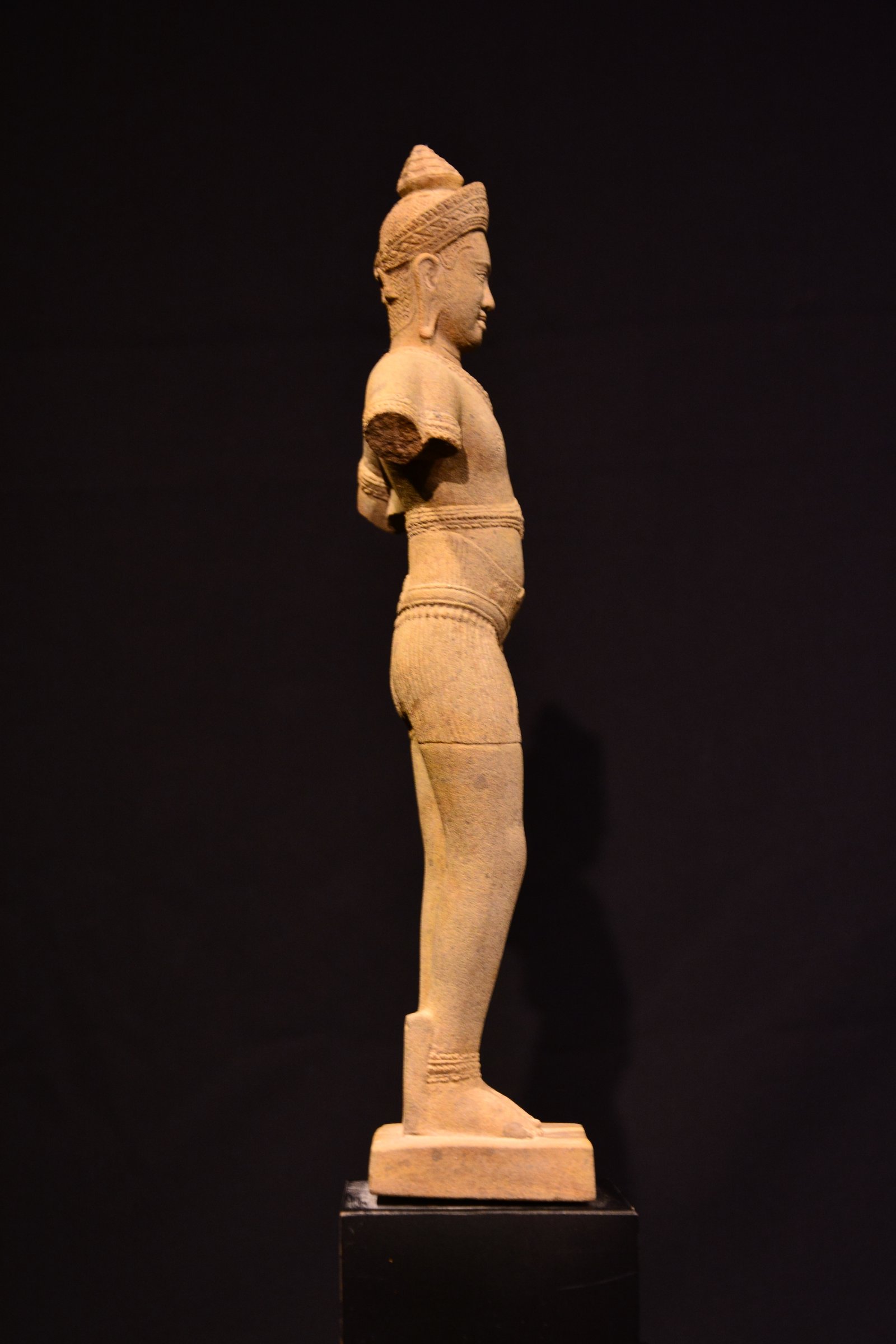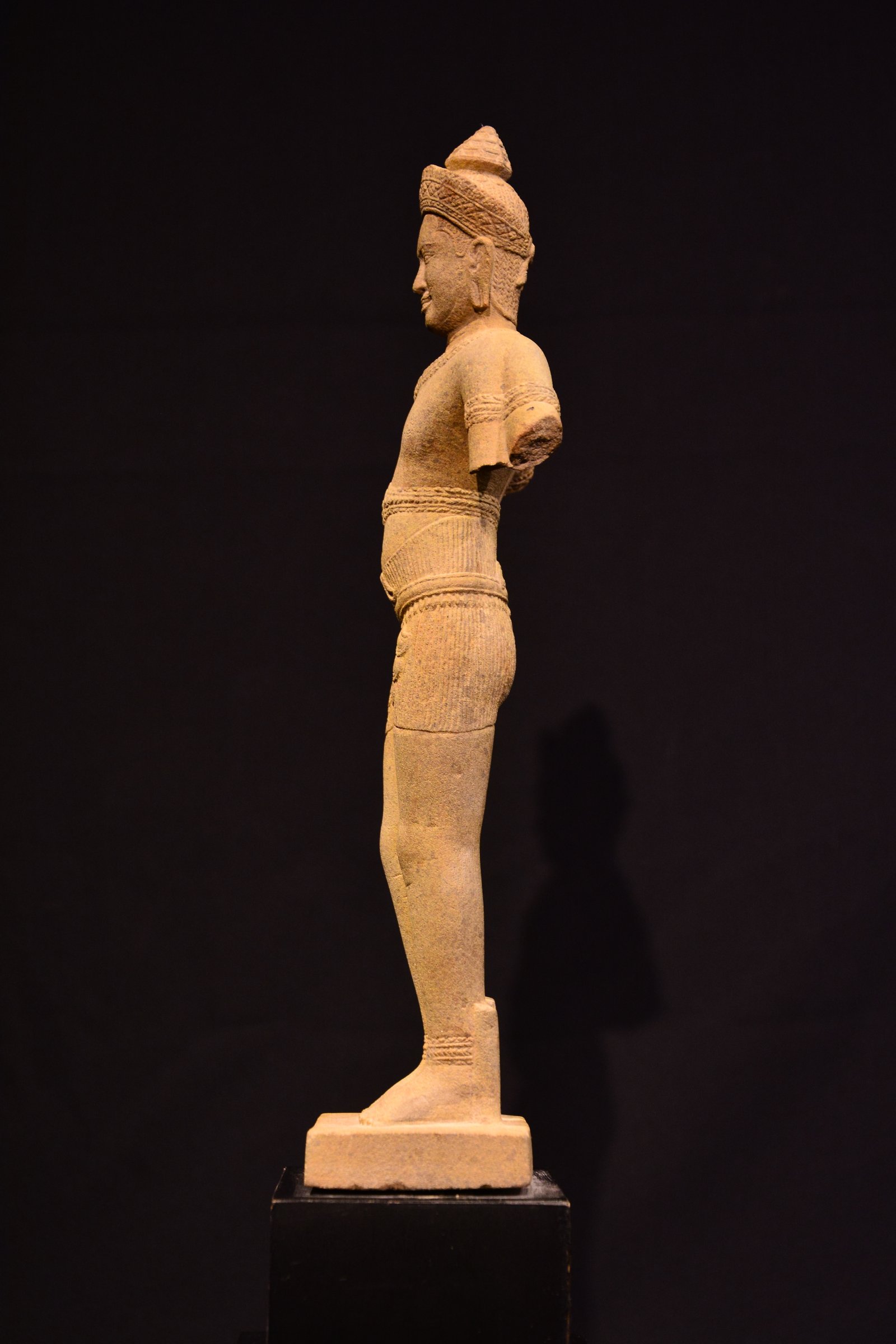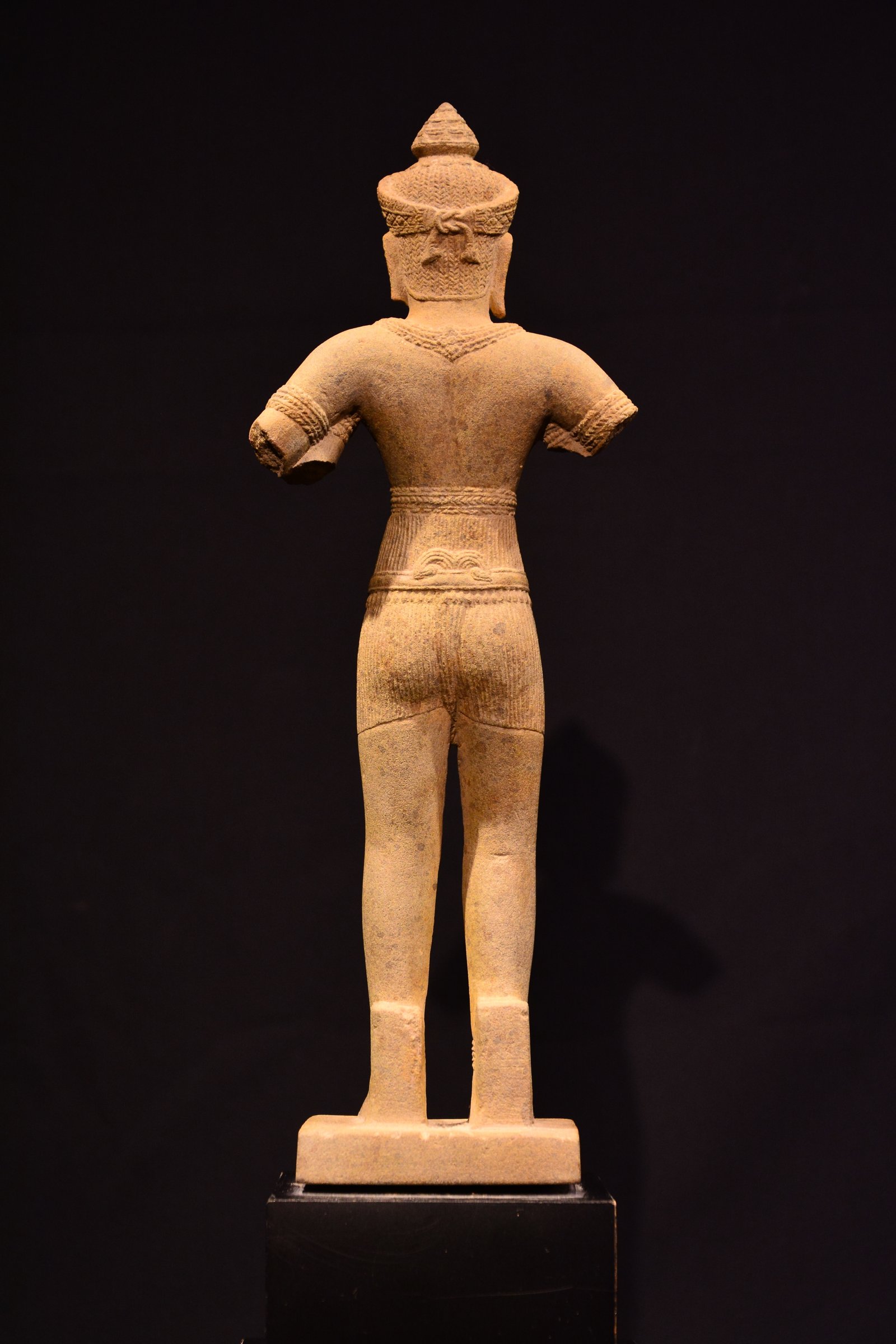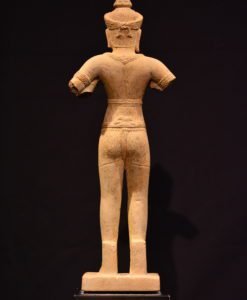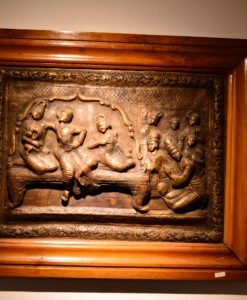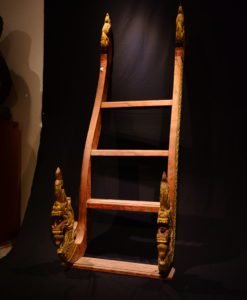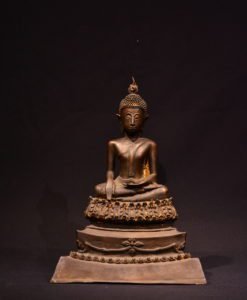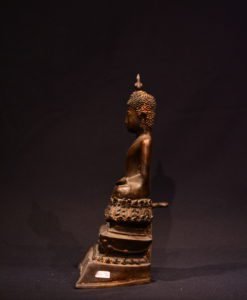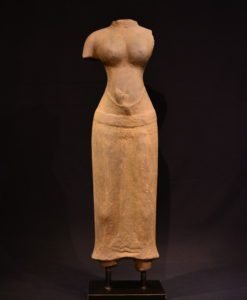Majestic Khmer Sandstone Statue of a Divine Figure – Bayon/Angkor Wat Period (12th Century)
Majestic Khmer Sandstone Statue of a Divine Figure – Bayon/Angkor Wat Period (12th Century)
ITEM DESCRIPTION
The Khmer Empire, renowned for its grand temples and masterful sculptures, reached its artistic zenith during the Bayon and Angkor Wat periods (12th–13th century). This exquisite sandstone statue, meticulously carved by master artisans, exemplifies the refined aesthetics and profound spiritual significance of Khmer art. Standing gracefully with remnants of four arms, it is a rare and valuable artifact, likely representing a divine figure such as Vishnu or Avalokiteshvara.
A Testament to Khmer Mastery and Devotion
Crafted from sandstone, the preferred medium of Angkorian sculptors, this piece has withstood the test of time, bearing the subtle patina of centuries. The aged surface and natural discoloration only enhance its authenticity, marking it as a relic of a glorious past. While minor scratches from excavation are present, the statue has undergone restoration, ensuring its preservation while maintaining its integrity as an ancient artifact.
Iconography and Divine Symbolism
The four-armed representation is a hallmark of divine imagery in Khmer art, particularly associated with Hindu and Buddhist deities. The figure is adorned with a finely detailed sampot, draped elegantly around the lower body, showcasing floral and ornamental patterns that were characteristic of Angkorian royalty and deities. The elaborate belt and chest accessories further emphasize the status of the figure, suggesting divine or regal authority.
Despite the absence of its original hands, the remaining structure of the armpits suggests the presence of four arms, reinforcing its identity as Vishnu, the Hindu protector of the universe, or Avalokiteshvara, the Bodhisattva of Compassion, who played a central role in the transition from Hinduism to Mahayana Buddhism during the reign of King Jayavarman VII (1181–1218 CE).
The Facial Expression – A Symbol of Serenity
Though partially worn, the calm and composed facial expression reflects the Angkorian sculptural tradition of depicting deities with a sense of divine serenity and wisdom. The slightly downcast eyes symbolize compassion and enlightenment, qualities highly revered in both Hinduism and Buddhism. The broad shoulders and well-defined torso further exemplify the idealized human form celebrated in Khmer art.
A Piece of History, A Rare Investment Opportunity
This statue’s provenance traces back to an influential Cambodian figure, adding an intriguing historical layer to its narrative. The Bayon period, known for its expressive and spiritual representations, produced significantly fewer surviving sculptures than the earlier Angkor Wat period, making this piece an exceptionally rare find for collectors.
Why This Artifact is a Coveted Masterpiece
- Historical Significance – A genuine artifact from the golden era of the Khmer Empire, reflecting both Hindu and Buddhist influences.
- Exquisite Craftsmanship – The intricate detailing of the sampot, belt, and ornaments showcases the artistic brilliance of Angkorian sculptors.
- Rarity – Four-armed divine figures from this period are scarce in private collections, making this an exceptional acquisition.
- Condition – While showing natural signs of age, the statue remains well-preserved with professional restoration, ensuring longevity.
- Investment Value – With the increasing global interest in Khmer antiquities, this piece represents not only historical significance but also financial appreciation for serious collectors.
Acquisition and Legality
This artifact is available exclusively to high-end collectors and private investors who appreciate its cultural and artistic significance. Given its importance, proper documentation will be provided to ensure compliance with international heritage and art collection standards.
References
- Coedès, G. (1968). The Indianized States of Southeast Asia. University of Hawaii Press.
- Jessup, H. I. (2004). Art and Architecture of Cambodia. Thames & Hudson.
- Rooney, D. F. (2011). Angkor: An Introduction to the Temples. River Books.
- Woodward, H. (2010). The Art and Architecture of Thailand: From Prehistoric Times Through the Thirteenth Century. Brill.
Own a Masterpiece of Khmer History
This majestic Khmer sandstone statue is more than an artifact—it is a testament to the spiritual, artistic, and historical grandeur of the Khmer Empire. A rare opportunity to own a genuine piece of Southeast Asian heritage, it awaits a distinguished collector who values its legacy.
For inquiries or to schedule a private viewing, please contact us directly.
Origin: Cambodia
Period: Bayon – Angkor Wat
PRODUCT DETAIL
Medium: Sandstone
Dimensions:
Height 30 cm
Length – cm
Wide 8 cm
Condition Report: –
Please keep in touch for Price and more information: Mallika1013@gmail.com



